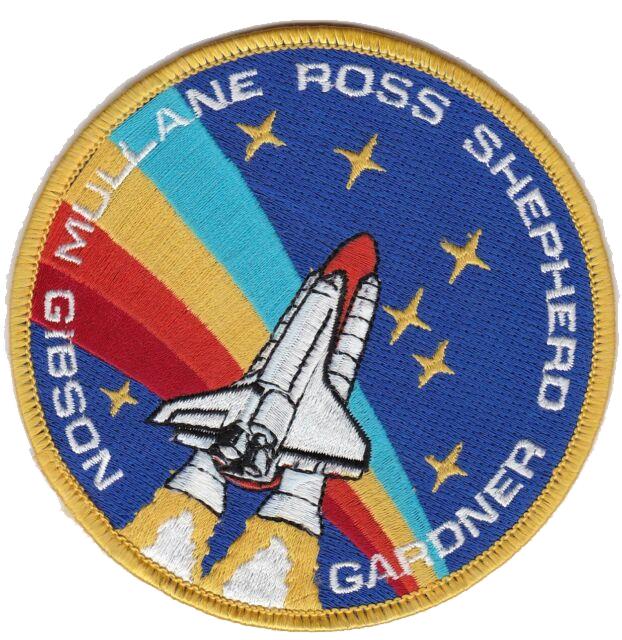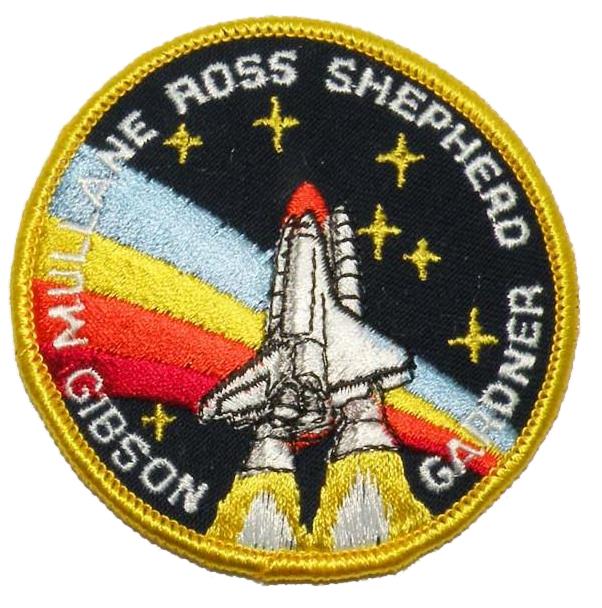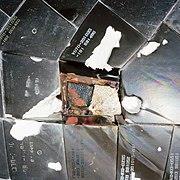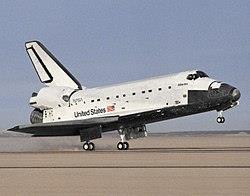Robert L. Gibson
(Third Space Flight)
Guy S. Gardner
(First Space Flight) Mission Specialist 1:
Richard M. Mullane
(Second Space Flight) Mission Specialist 2:
Jerry L. Ross
(Second Space Flight) Mission Specialist 3:
William M. Shepherd
(First Space Flight)
STS-27 was a NASA Space Shuttle mission, the 27th shuttle mission overall and the third flight of Space Shuttle Atlantis. Launching on 2 December 1988 on a four-day mission, it was the second shuttle flight after the Space Shuttle Challenger disaster of 1986. STS-27 carried a classifiedpayload for the U.S. Department of Defence.
Pilot:
-
Command Pilot:
Astronauts:
The Space Shuttle Missions
STS-27 (R)
Study
Research
Main Index
Space Cosmology
Science Research
*
About
Science Research
Science Theories
Desk
Site Map
BookShelf
Copyright © by Nigel G Wilcox · All Rights reserved · E-Mail: ngwilcox100@gmail.com
Designed by Nigel G Wilcox
Powered By AM3L1A
Pages within this section: USA Shuttle Mission Flights
STS-27
Pages within this section:
9
M
8
SM
Sub-Menu
menu
-
26
27
28
29
30
31
32


The Space Shuttle Atlantis (OV-104), at the time the youngest in NASA's shuttle fleet, made its third flight on a classified mission for the United States Department of Defense (DoD). It deployed a single satellite, USA-34. NASA archival information has identified USA-34 as Lacrosse 1, a side-looking radar, all-weather surveillance satellite for the US National Reconnaissance Office (NRO) and the Central Intelligence Agency (CIA).
The mission was originally scheduled to launch on 1 December 1988, but the launch was postponed one day because of cloud cover and strong wind conditions at the launch site. Liftoff occurred from Launch Complex 39, Pad B (LC-39B) at Kennedy Space Center, Florida, on 2 December 1988 at 09:30 EST. Atlantis touched down on 6 December 1988 on Runway 17 at Edwards Air Force Base, California, at 18:35 EST. The total mission elapsed time at wheels-stop was 4 days, 9 hours and 6 minutes. Atlantis was returned to the Kennedy Space Centre on 13 December and moved into an OPF on 14 December 1988.
There has been speculation that an EVA was conducted during this mission. Interviews with members of the crew several years after the flight confirmed there had been a problem with the satellite upon release, whereupon a rendezvous with the satellite was effected and repairs performed. These unspecified repairs could have necessitated a spacewalk, likely performed by Ross and Shepherd. As a classified DoD mission, details or confirmation of such an EVA remain unreleased.
The day after Atlantis landed, the 1988 Armenian earthquake killed tens of thousands in the Soviet Union. At an astronaut meeting Gibson said, "I know many of you may have been very curious about our classified payload. While I can't go into its design features, I can say Armenia was its first target!" As military astronauts laughed and civilians cringed, Gibson continued, "And we only had the weapon set on stun!

Atlantis' Thermal Protection System tiles sustained extensive damage during the flight. Ablative insulating material from the right-hand solid rocket booster nose cap had hit the orbiter about 85 seconds into the flight, as seen in footage of the ascent. The STS-27R crew also commented that white material was observed on the windshield at various times during ascent. The crew made an inspection of the shuttle's impacted starboard side using the shuttle's Canadarm robot arm, but the limited resolution and range of the cameras made it impossible to determine the full extent of the tile damage.
A partly melted aluminum plate on Atlantis' underside.
Data Courtesy Wikipedia.org















